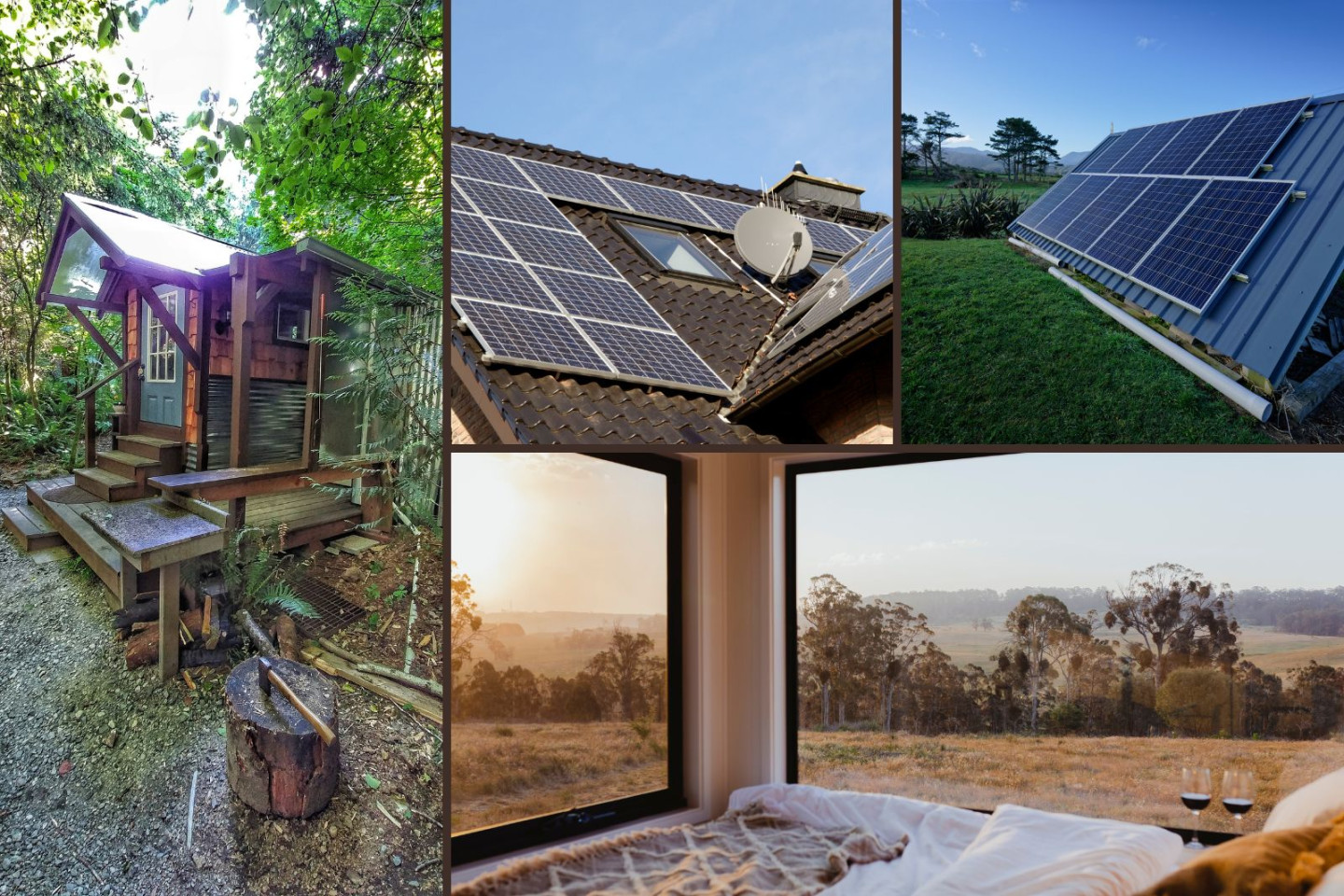Introduction
Living off-grid is more than just a trendy buzzword; it’s a lifestyle choice that prioritizes self-sufficiency and harmony with nature. It’s about disconnecting from the traditional grid of utilities and embracing alternative ways to power and sustain your home. But what does it really mean to live off-grid? Let’s dive in.
What Does Off-Grid Mean?

In the simplest terms, off-grid living means not relying on public utilities like electricity, gas, or water. You generate your own power, often through renewable sources like solar or wind energy. You collect your own water, and you manage your waste without relying on municipal systems. It’s about creating a self-sustaining ecosystem for your home.
Lighting Your Off-Grid Home
Imagine a world without flicking a switch. In an off-grid home, lighting is a strategic consideration.
Natural Light: Maximizing natural light is key. Large windows and skylights can significantly reduce your reliance on artificial lighting.
Color Palette for Your Off-Grid Abode
Color can dramatically influence the feel of your off-grid space.
Neutral Tones: These colors tend to create a calm and serene atmosphere, perfect for a retreat-like environment.
Furniture: Comfort Meets Functionality
Off-grid living doesn’t mean sacrificing comfort.
Multifunctional Pieces: Opt for furniture that serves multiple purposes, like a storage ottoman or a sofa bed.
Materials: Sustainable Choices
When building or furnishing your off-grid home, prioritize sustainable materials.
Recycled Materials: Give new life to old materials by incorporating them into your home decor.
Accessories: Adding Personal Touches
Accessories can transform a space.
Plants: Bring life and freshness to your home with indoor plants.
Layout: Maximizing Space and Efficiency
An efficient layout is crucial in an off-grid home.
Open Floor Plans: Create a sense of spaciousness and allow for better natural light.
Views: Connecting with Nature
One of the greatest benefits of off-grid living is the opportunity to connect with nature.
Frame the View: Design your home to showcase the best views of your surroundings.
Conclusion
Embracing an off-grid lifestyle is a journey towards self-sufficiency and a deeper connection with nature. By carefully considering factors like lighting, color, furniture, materials, accessories, layout, and views, you can create a comfortable, functional, and sustainable off-grid home. Remember, it’s about finding a balance between modern conveniences and living in harmony with the environment.
FAQs
1. How much does it cost to go off-grid?
The cost of going off-grid varies greatly depending on factors like location, desired level of self-sufficiency, and initial investment in systems like solar panels and water collection.
2. Can I still have modern amenities off-grid?
Absolutely! With advancements in technology, you can enjoy many modern conveniences like Wi-Fi, appliances, and entertainment systems while living off-grid.
3. What about emergencies and healthcare?
Having a well-thought-out emergency plan is essential for off-grid living. This includes having first aid supplies, communication devices, and a backup plan for essential services.
4. Is off-grid living suitable for families?
Yes, off-grid living can be a rewarding experience for families. It offers opportunities for learning, self-reliance, and a closer connection to nature.
5. What are the environmental benefits of off-grid living?
Living off-grid reduces your carbon footprint by minimizing reliance on fossil fuels and reducing waste. It also promotes conservation of natural resources.